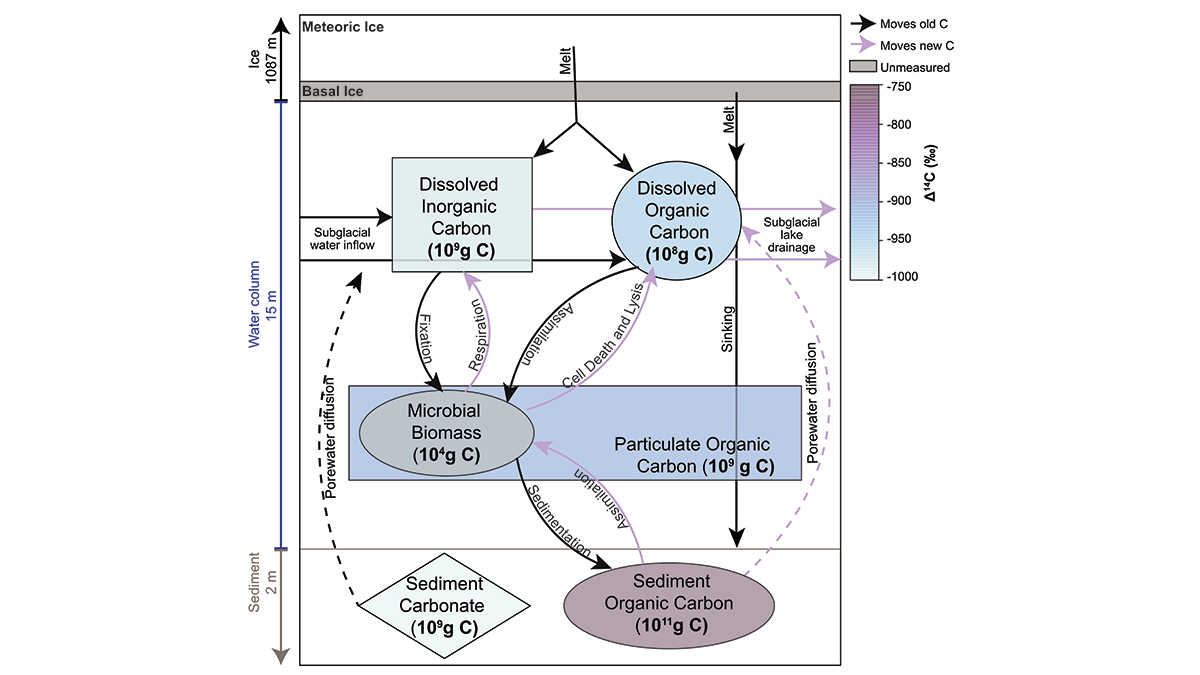Editors’ Highlights are summaries of recent papers by AGU’s journal editors.
Source: AGU Advances
The sensitivity of large ice sheet extent to climate over millennial timescales is important for predicting sea level change, but still poorly quantified. Venturelli et al. [2023] use a clever chain of reasoning to put limits on Holocene movement of the grounding line – the location of transition from grounded ice sheet to floating ice shelf in the southern Ross Sea. Their evidence comes from water and sediment samples obtained by drilling through ~1 kilometer of ice to sample a pristine subglacial lake 150 kilometers inland of the current grounding line. The presence of radiocarbon in the lake sediments provides evidence for a mid-Holocene connection to the ocean – the only source of more ‘recent’ (radiocarbon-containing) carbon. By building a model of lake carbon cycling and estimating subglacial hydrology, they further infer that during deglaciation, the grounding line must have been over 250 kilometers inland of its current position.
Citation: Venturelli, R. A., Boehman, B., Davis, C., Hawkings, J. R., Johnston, S. E., Gustafson, C. D., et al. (2023). Constraints on the timing and extent of deglacial grounding line retreat in West Antarctica. AGU Advances, 4, e2022AV000846. https://doi.org/10.1029/2022AV000846
—Susan Trumbore, Editor, AGU Advances

